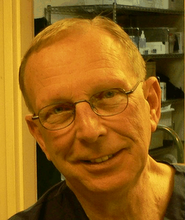 In my older years, I now consider Dune (1965) the best science-fiction novel, and Frank Herbert one of the best sci-fi authors. The novel's background thought overwhelms with its suppression of technology to get at the intrigue of potential human development and variation.
In my older years, I now consider Dune (1965) the best science-fiction novel, and Frank Herbert one of the best sci-fi authors. The novel's background thought overwhelms with its suppression of technology to get at the intrigue of potential human development and variation.  My previous favorite was Robert Heinlein’s Starship Trooper (1959), mostly because of its military culture and social constructs. For example, all officers of the Mobile Infantry, Heinlein’s equivalent of Airborne, were drawn strictly from its enlisted corps, thereby assuring meritocracy of its officers. Further, the worldwide society gave franchise only to those who had served society either through military service or through other service requiring risk of life. The idea was not that they voted any better, but they had demonstrated at least an ethnocentric level of responsibility. They had put their society above themselves. The book held women as physiologically and psychologically more capable pilots than men, a concept rare in 1959--or even now.
My previous favorite was Robert Heinlein’s Starship Trooper (1959), mostly because of its military culture and social constructs. For example, all officers of the Mobile Infantry, Heinlein’s equivalent of Airborne, were drawn strictly from its enlisted corps, thereby assuring meritocracy of its officers. Further, the worldwide society gave franchise only to those who had served society either through military service or through other service requiring risk of life. The idea was not that they voted any better, but they had demonstrated at least an ethnocentric level of responsibility. They had put their society above themselves. The book held women as physiologically and psychologically more capable pilots than men, a concept rare in 1959--or even now. I note the psychosocial thread running through my choices. It is a fascination that still functions with my latest interests in Lawrence Kohlberg and Carol Gilligan. Apparently it has moved out of sci-fi and into reality. I’ve long been aware that science fiction often rewrites the classics in a modern or future society’s context. For example, Heinlein’s best is normally considered Stranger in a Strange Land (1961), which is a rewrite of the story of Christ, a quite good one I realize in my later years.
Perhaps that is why I always thought Heinlein the best science fiction author, above the seconds, Arthur Clarke and Isaac Asimov. I rated them thus even after much of Heinlein’s future history had been overtaken with real history, but I gave much of that credit to Heinlein being a graduate of the US Naval Academy (Class of ’33, if I remember right). He was discharged from the Navy on disability and wrote his first science fiction story in 1939, “to pay the rent,” as he put it.
 Although Heinlein, Asimov, and Clarke were the “Big Three,” I also liked Fred Hoyle, both for championing the steady state universe (he coined “Big Bang” as a derogatory term) and for his science fiction novel, The Black Cloud (1957). A cloud in space turns out to be super-intelligent life and communicates with man. It is as surprised that life can form on planets as man is surprised to learn the cloud is alive. It turns out helical structures can form from inorganic matter, so such life is indeed possible, thus probably exists. Hoyle also first proposed the formation of heavier elements in the cores of stars.
Although Heinlein, Asimov, and Clarke were the “Big Three,” I also liked Fred Hoyle, both for championing the steady state universe (he coined “Big Bang” as a derogatory term) and for his science fiction novel, The Black Cloud (1957). A cloud in space turns out to be super-intelligent life and communicates with man. It is as surprised that life can form on planets as man is surprised to learn the cloud is alive. It turns out helical structures can form from inorganic matter, so such life is indeed possible, thus probably exists. Hoyle also first proposed the formation of heavier elements in the cores of stars.  Asimov, of course, wrote extensively about robots, formulating the Three Laws of Robotics, regulating robots in their rise to intelligence. He was also one of, if not the, most prolific writers ever, with over five hundred books published in his career. His short story “Nightfall” (1941) is considered by Science Fiction Writers of America as the best science-fiction story ever written.
Asimov, of course, wrote extensively about robots, formulating the Three Laws of Robotics, regulating robots in their rise to intelligence. He was also one of, if not the, most prolific writers ever, with over five hundred books published in his career. His short story “Nightfall” (1941) is considered by Science Fiction Writers of America as the best science-fiction story ever written.  Clarke wrote of man’s history and transformation in the series starting with 2001: A Space Odyssey (1968) which is rated among the top ten movies ever made, and included HAL, the sentient computer who attempts to take over the mission by eliminating the crew. Clarke is also the “inventor” of orbital satellites, and the geosynchronous orbit of communications satellites is named the “Clarke orbit.”
Clarke wrote of man’s history and transformation in the series starting with 2001: A Space Odyssey (1968) which is rated among the top ten movies ever made, and included HAL, the sentient computer who attempts to take over the mission by eliminating the crew. Clarke is also the “inventor” of orbital satellites, and the geosynchronous orbit of communications satellites is named the “Clarke orbit.”In reflection, I am amused and amazed how the creations of these authors are woven throughout my life and have played a seeding stimulus throughout it. Light reading turns out not very light at all, but the light of a lifetime.


No comments:
Post a Comment